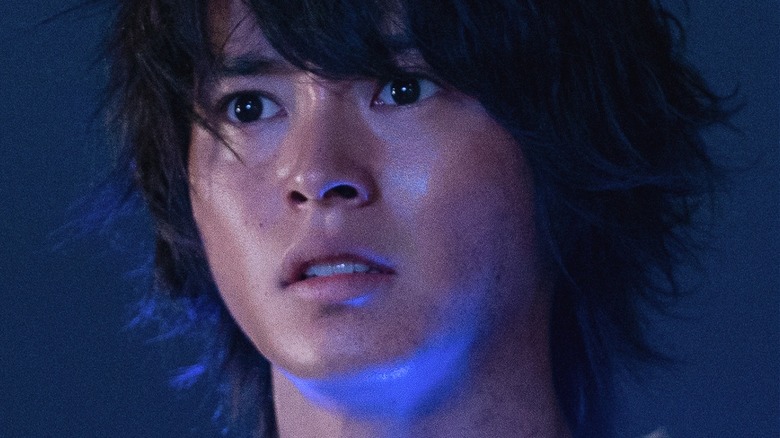How Faithful Is Netflix's Alice In Borderland To The Manga?
"Alice in Borderland" is another in a string of live-action manga and anime adaptations from the streamer. However, where the series deviates from many other shows of its ilk is with its mystery box premise. Like in "Lost," the characters of this series don't really know what's going on, and neither does the audience.
"Alice in Borderland" follows a group of characters that are transported to a mysterious realm called Borderland with no explanation as to why. Therein, they're forced to play a set of elaborate games with life-or-death stakes if they hope to return to their own reality.
However, "Alice in Borderland" is based on the manga by Haro Aso, which began way back in October 2014 and was completed in February 2015. Given all that, fans of the series and its source material might find themselves wondering how close the two are to one another in terms of their storyline and characters.
Netflix's Alice in Borderland is fairly faithful to its source material
According to Collider, though there are some small differences here and there, Netflix's adaptation of "Alice in Borderland" remains fairly similar to its source material. One of the first things that fans will notice is that the main characters have been aged up a few years, as they're in their early 20s rather than their late teens. Since aging characters up for adaptations is a pretty natural thing, though, viewers likely won't take much issue with this particular change.
Another swap is made to the character of Chota Segawa (Yuki Morinaga). While the character is portrayed as something of a creep and pervert in the manga version of "Alice in Borderland," following a common trope of anime and manga, Netflix's adaptation wisely sidesteps these aspects and changes Chota for the better as a result.
It would seem that the Netflix version of "Alice in Borderland" also changes how the members of the group arrive in the titular land. In the manga, the characters wake up in a bar owned by Daikichi Karube (Keita Machida), whereas in the live-action version, they exit a bathroom they're hiding from law enforcement in to find themselves in the new realm.
While changes made while adapting a story to a new medium are only natural, longtime fans of "Alice in Borderland" will no doubt be pleased to learn that the series doesn't deviate in any severe ways from Haro Aso's manga.

